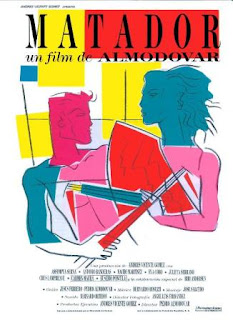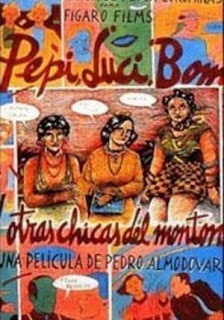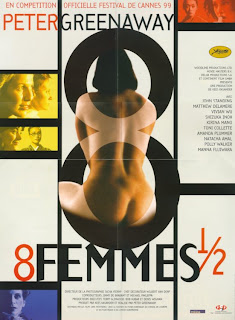
In 2006, Lars von Trier treated his audience to a comedy.
The Boss of it All is a step back for von Trier. Most of his films are dark and require a great deal of patience. For
The Boss of it All, von Trier toned down much of his trademark habits. Gone was the central female character lost in a male dominated world. Gone was the camera work and the Brechtian style morality plays. Was this meant to signify a permanent shift? Or, just a von Trier mood swing? Prior to
The Boss of it All, von Trier released
Manderlay (his sequel to
Dogville).
Manderlay and
The Boss of it All remain my least favorite of the von Trier films. I was worried. Then, a long period of silence. Four years before word of
Antichrist.
Antichrist was being pushed as a horror film. The title and the previews certainly played to the genre. Then word of its release at Cannes. Audience members walking out in disgust. People standing up and booing at the films end. And the press demanding an explanation for the film. Per usual, von Trier doesn't break down easy. He informed those he didn't need to explain himself. The audience was his guest to his film. Lars von Trier has only ever told us the film was created during a period of great depression. A long period of writer's block during which time von Trier thought he would never write again.
Some have claimed the film means nothing. Just a film to disturb an audience. Images from dreams and the depths of depression. Those people feel they've been tricked. As if film must hold meaning. But, this wouldn't be the first director to create a film from dreams. Robert Altman's
3 Women is a surreal film with no answers. Altman admitting it was created directly from a dream and that the meaning is open to interpretation. Art is created out of periods of change for artists. Paintings, music, film, etc. The artist is expressing a mood and not always a purpose. Do we judge film harsher because it includes so many people? The money put into a film, the actors living the film, and the audience following a director. If this were a painting, it would be contained within a small square. We could walk by it. Do we expect more from film because it so often expects more from us?
I do believe
Antichrist is about nothing. Let me rephrase this. I believe
Antichrist is about our nothingness. But, the film itself is about everything. On my first viewing of the film, a little over a year ago, I enjoyed the film. I was very critical of the film, though. I was missing pieces. I had watched the film in two parts (due to the website's constrictions). This is not a film to break into parts. This is a straight through roller coaster assault on every emotion a film is capable of bringing out of its audience. I found (and still find) the Prologue of the film to be a little difficult. I wish it were shorter. It boarders on becoming "too artsy" for the sake of drama. But, on the other hand, it is a beautifully shot black and white handful of minutes. In no way weakening the film.
If the Bible is a Christ story, is the anti-Bible the Antichrist story? And, if so, is this film the anti-Bible? I feel watching the film with this as thought helps one to move through the film without asking 'how is this possible?' We have been handed stories of Noah's ark, Jonah and the whale, and (most importantly) a talking snake in the Garden of Eden. Are we just being handed this anti-Eden story and meant to take lessons? Not to question the validity of the actions and consequences? von Trier has turned Eden into Satan's garden in place of God. This is a world where God is truly dead. It has been suggested this is the world where God has given up.
After the death of their child, a couple returns to their country retreat. The wife is a mess. The husband is a controlling therapist. The country retreat is named Eden. The husband, never given a name and referred to as He in the credits, wishes to control/recreate/shape his wife, She. Isn't this what we've been taught from the Bible? Man helps, saves woman? Is the Bible not to blame for so much of what society deems as "not equal" (women, queers, African-Americans, etc)?
Many have argued the film is misogynist. I could not disagree more. I believe this is one of the strongest feminist films created. Lars von Trier may put his women through hell, but he does it for a reason. von Trier wants us to recognize what history has done to women. And, what we continue to do to those we are taught to believe as "different" or "less than."
I am usually capable of holding in my emotions. I have only cried, with others in my presence, during a small handful of films (
Dancer in the Dark, The Wrestler, The Event, Home for the Holidays) and by the time this film ended I had tears. I was able to control myself from a complete breakdown. The last forty minutes of the film does not let you breathe. The constant attack and anger keeps your breath deep inside and one is afraid of shifting.
I only have two experiences with the film. There is so much symbolism (the Three Beggars require a lot of attention and study). I have a lot of questions. A lot of theory I still need to work through. This requires repeated viewings. But, Antichrist isn't made to be sat through back to back without totally removing yourself from the film.
There are scenes in this film you will never have thought would be presented to you in a movie- or ever. The material, the action, the message are filled with dread. I think you're fucked up for refusing to watch it. And you're fucked up once it's over.
A+

























